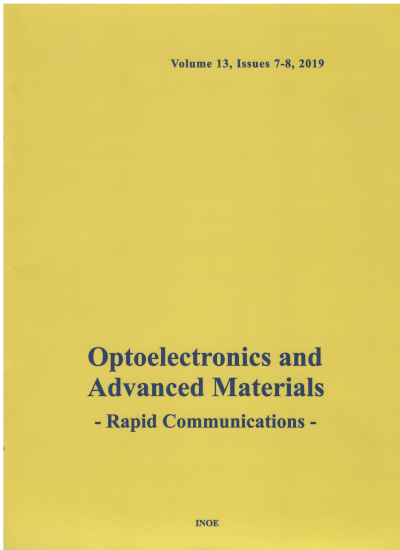Abstract
In this present study the commonly used SiCl4 have been replaced by organic compound Octamethylcyclotetrasiloxane (OMCTS). We present here for the first time direct dense glassy transparent SiO2 films deposition by indigenously developed FHD system. The grown films were characterized by ellipsometery for the optical properties. FTIR spectroscopy was carried out to study the various characteristic peaks of SiO2 bonds. The peaks corresponding to Si-O-Si stretching,
bending and rocking modes are observed at 1090 cm-1, 812 cm-1 and 461 cm-1 respectively. The absence of peaks corresponding to the OH bond in the As-deposited films reveals that the deposited films are most suitable for the photonic devices application. The surface and elemental analysis was carried out using SEM with EDAX attachment..
Keywords
Flame hydrolysis deposition, FHD, Octamethylcyclotetrasiloxane, Photonic devices, FTIR, SEM, EDAX.
Citation
J. P. BANGE, L. S. PATIL, D. K. GAUTAM, Effect of OMCTS flow rate on SiO2 films grown by flame hydrolysis deposition, Optoelectronics and Advanced Materials - Rapid Communications, 4, 4, April 2010, pp.584-587 (2010).
Submitted at: Sept. 21, 2009
Accepted at: April 11, 2010
